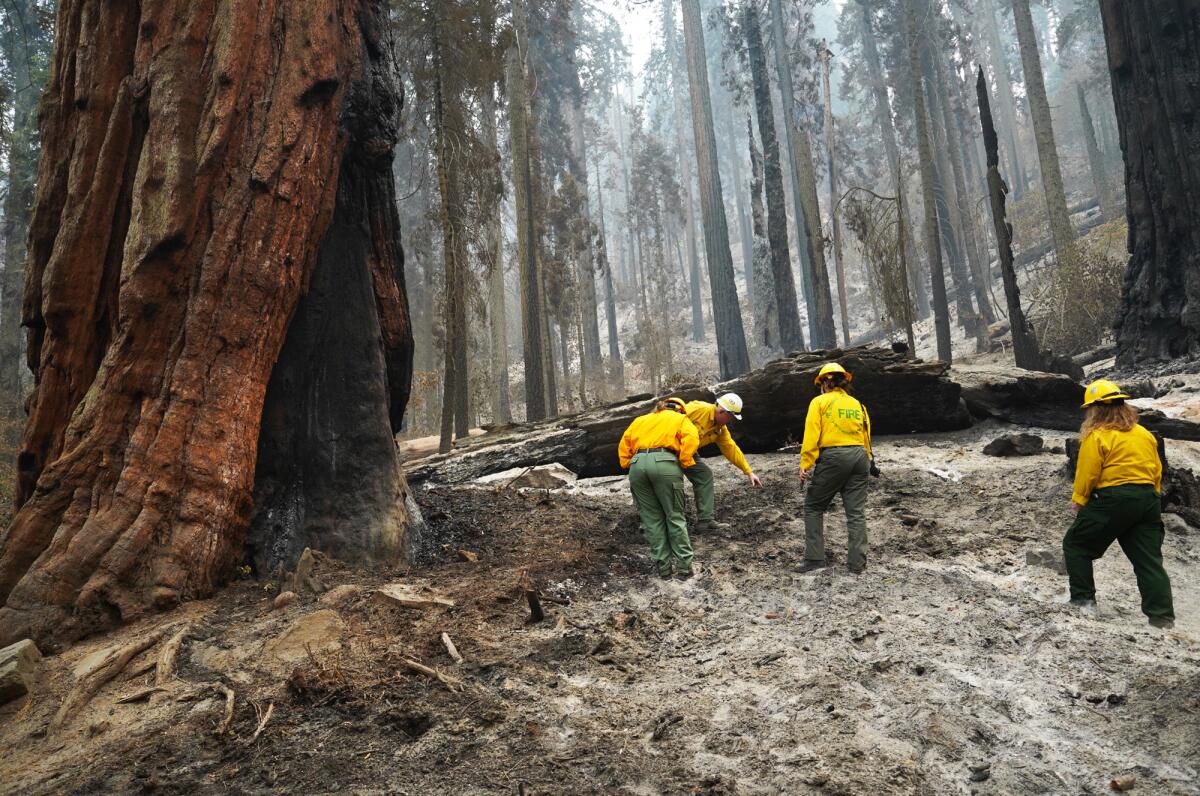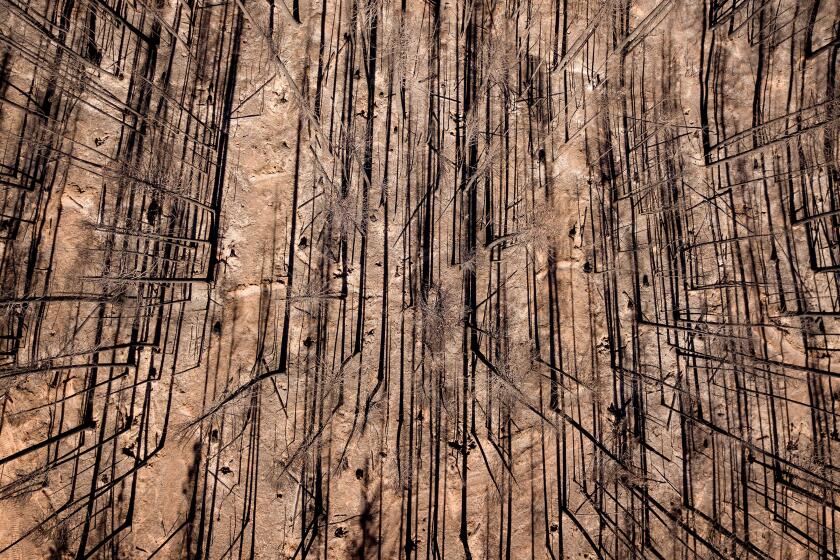KNP Complex fire triggers flurry of new evacuations, as flames threaten more giant sequoia trees

The 51,000-acre KNP Complex fire tearing through the Sequoia National Park triggered a flurry of evacuations Friday morning, as flames — spurred by a drying trend — threatened communities and burned toward more giant sequoias.
A spot fire ignited across the North Fork Kaweah River, along the northwestern end of the blaze, growing to about 600 acres by the following morning, fire officials said.
As crews focused on battling the spot fire, an evacuation order on Friday morning was issued for the communities of Grant Grove, Wilsonia and Cedar Grove in Kings Canyon National Park — near where towering giant sequoia rise and park staff live, according to Cassie Adams, a spokesperson for the fire. Non-fire personnel are required to leave the areas by 2 p.m.
Around the same time, Tulare County Sheriff’s Office issued its own mandatory evacuation orders for the communities of Big Meadows, Weston Meadows and Quail Flat in the Giant Sequoia National Monument. Those evacuating should travel westbound on Highway 180, authorities said.
Additional orders and warnings went out Thursday as fire activity in the north picked up. Authorities placed the communities of Eshom and Hartland Camp in Tulare County under mandatory evacuation. Fresno County issued its first warnings — for the Miramonte/Pinehurst area. More evacuation information can be found on the Tulare County Sheriff’s Office Facebook page, the Fresno County Sheriff’s Office Facebook page and the Sequoia and Kings Canyon National Parks Facebook page.
It’s believed that flames from the KNP Complex are burning in — or passed through — 11 sequoia groves, though details about the extent of the damage remain scant, said Christy Brigham, head of resource management and science for Sequoia and Kings Canyon National Parks.
One massive tree in the famed Giant Forest recently toppled over after burning for several days, splaying across a road.
“Unfortunately we did lose one giant, but 99.9% of them look fine,” Mark Garrett, a spokesperson for the fire, said of the other trees in the grove.
With fire season far from over and much of the state in a drought, officials are warning that this year’s fires could end up competing with last year’s record-breaking season.
The KNP Complex fire — one of two lightning-sparked blazes tearing through the southern Sierra Nevada — had seared 51,596 acres and was 20% contained Friday morning. To the south, the Windy fire — which has destroyed more than a dozen homes — was 89,804 acres and 40% contained. Both blazes erupted Sept. 9 amid a massive lightning storm.
Containment for the twin fires has risen significantly in recent days. Cooler temperatures and higher humidity dampened fire activity, allowing firefighters to wage more direct attacks and firm up containment lines.
But a drying trend already underway is forcing temperatures up and humidity down — conditions expected to spur more aggressive fire behavior.
“Those fuels, that stored energy on the ground ,from grass to timber — it’s just marinating in that dry air,” said Jeff Shelton, a fire behavior analyst with the Windy fire, during a Friday morning briefing. “And so without moisture in the fuels, the fire is able to move through it and just translate as energy all the way across the landscape unimpeded.”
In California and beyond, some people are deeply in grief, stunned that flames could again imperil some of Earth’s oldest living things.
The Windy fire has torn through rugged landscape across the Sequoia National Forest and Tule River Indian Reservation, burning into communities and groves of towering giant sequoia trees across the large burn area.
At least 14 homes and a dozen other minor structures were lost, primarily in the Sugarloaf and Long Meadow areas, fire officials said.
The fire has seared several groves of giant sequoias, killing at least 30 trees in its fiery path, said Garrett Dickman, a botanist assigned to the fire who counted the fatalities himself. An aerial assessment, to be conducted once weather permits, is likely to reveal much greater devastation, he said.
Dickman was recently joined by a sequoia task force — a group of dedicated personnel who are helping to prep sequoia for incoming flames and triage those impacted by fire, by hosing them down and putting out blazes that may spring up around their bases.
“My goal is just to work through as many of the groves that we can get to,” he said on Friday, adding that they were planning on hitting Red Hill grove and beginning work on part of Black Mountain grove.
More to Read
Sign up for Essential California
The most important California stories and recommendations in your inbox every morning.
You may occasionally receive promotional content from the Los Angeles Times.













